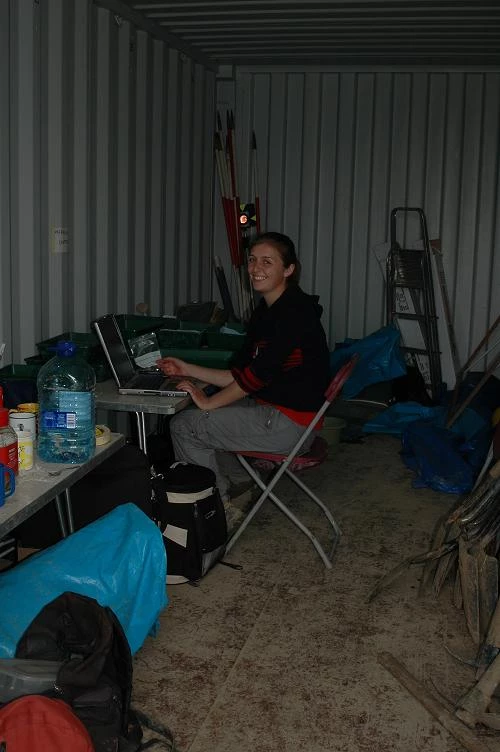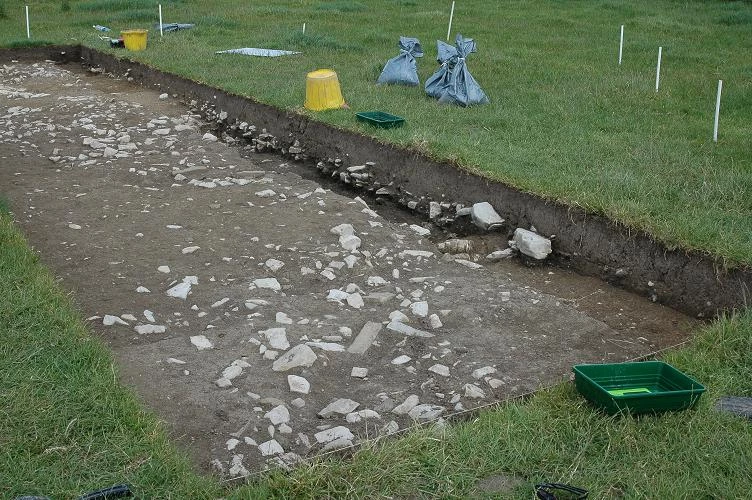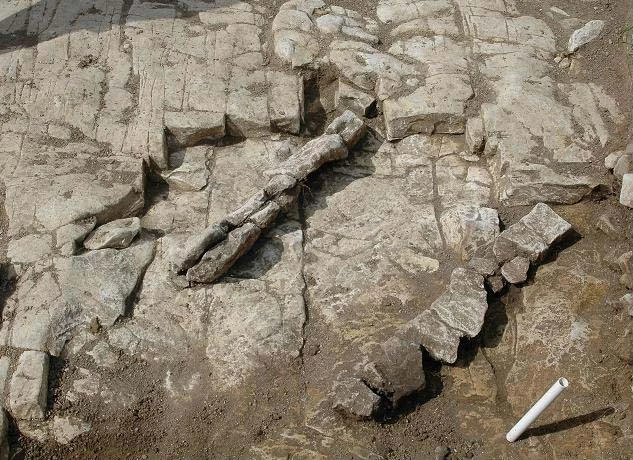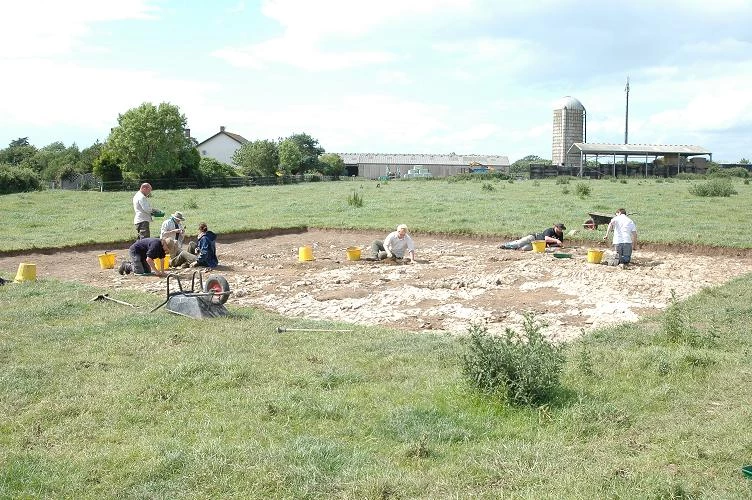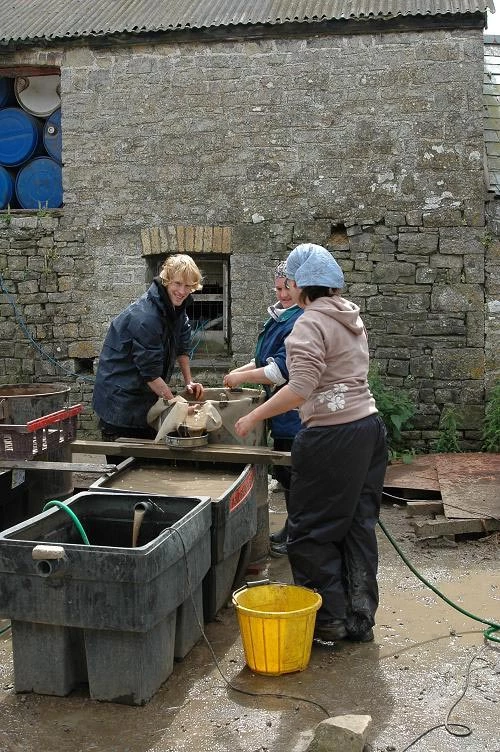Wednesday 27 June
, 27 Mehefin 2007
Contributed by ABI
Well it’s been quite a break since the last blog so here is a round up recent events. People in Trench 1 are excavating features, for instance I excavated a (potential!) post hole yesterday. In Trench 2 there has been found a shoe (i.e. a lot of nails in the shape of a shoe). In Trench 3 the quest to discover the ditch is still going on (as far as I know). But today my mission has been on wet sieving. It is so we can analyse the environmental remains of the previous excavations such as the midden of last year.
It is a very wet and cold job but thankfully the weather has held out today. The tanks are currently being cleaned out by eager volunteers who, I expect, would wish to remain nameless. The work looks very disgusting as it leaves you with gloves of mud! A couple people have been doing bone washing as per normal. Bone washers from now on face the weather like the rest of us as the gazebo broke! They do have a radio though so they can’t moan that badly, no matter how bored they may be! There is a fly in this blue cabin with me and it is landing on all the cups, I think I’ll bring my own in tomorrow and keep it in my bag!
